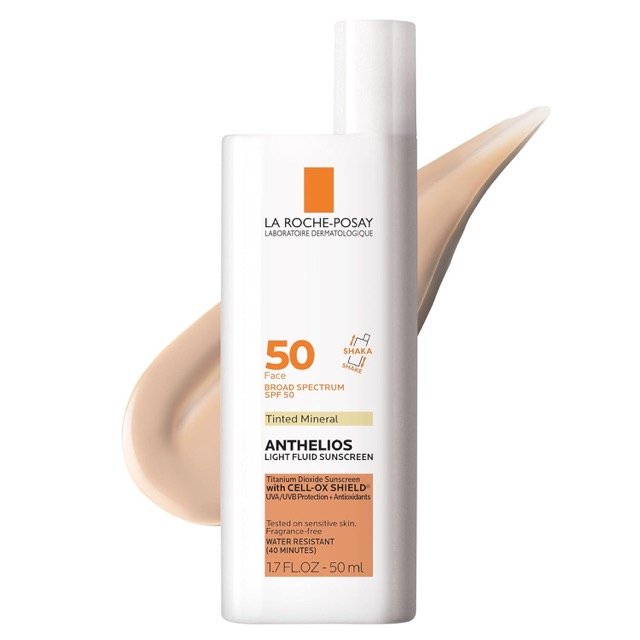Technetium Tc-99m Sulfur Colloid is a radiopharmaceutical agent containing technetium that is linked to sulfur. It is used in the scintigraphic scanning of the reticuloendothelial system.
Technetium Tc-99m Sulfur Colloid Uses:
-
Imaging agent:
- It is used in localization and mapping of lymph nodes draining a primary tumor in patients with breast cancer or malignant melanoma when used with a handheld gamma counter.
- It is also used for reticuloendothelial cell function imaging agents like liver, spleen, and bone marrow.
- To check the patency of peritoneo-venous (LeVeen) shunt..
- Esophageal transit studies, gastroesophageal reflux scintigraphy, and detection of pulmonary aspiration of gastric contents.
Technetium Tc-99m Sulfur Colloid Dose in Adults
Technetium Tc-99m Sulfur Colloid Dose in Breast cancer lymph node localization:
- SubQ: 0.1 to 1 mCi (3.7 to 37 MBq) in volumes ranging from 0.1 to 1 mL
Technetium Tc-99m Sulfur Colloid Dose in localization of lymph node in malignant melanoma:
- SubQ: 0.1 to 1 mCi (3.7 to 37 MBq) in volumes ranging from 0.1 to 1 mL
Technetium Tc-99m Sulfur Colloid Dose in Peritoneo-venous (LeVeen) shunt patency evaluation:
-
Intraperitoneal injection:
- 1 to 3 mCi (37 to 111 MBq)
-
Percutaneous transtubal (efferent limb) injection:
- 3 to 1 mCi (12 to 37 MBq) in a maximum volume of 0.5 mL
Technetium Tc-99m Sulfur Colloid Dose in Reticuloendothelial cell imaging:
-
Bone marrow:
- IV: 3 to 12 mCi (111 to 444 MBq)
-
Liver/spleen:
- IV: 1 to 8 mCi (37 to 296 MBq)
Technetium Tc-99m Sulfur Colloid Dose in Esophageal transit studies (gastroesophageal reflux scintigraphy and pulmonary aspiration imaging):
-
Gastroesophageal studies:
- Oral: It is given as 0.15 to 0.3 mCi (5.55 to 11.1 MBq)
-
Pulmonary aspiration studies:
- Oral: it is given as 0.3 to 0.5 mCi (11.1 to 18.5 MBq)
Technetium Tc-99m Sulfur Colloid Dose in Childrens
Technetium Tc-99m Sulfur Colloid Dose in Reticuloendothelial cell imaging:
-
Bone marrow:
-
Pediatrics:
- IV: intravenously it is given as 0.03 to 0.15 mCi/kg (1.11 to 5.55 MBq/kg)
-
-
Liver and spleen:
- Newborn Infants:
-
- IV: it is given as 0.2 to 0.5 mCi (7.4 to 18.5 MBq)
-
- Children and Adolescents:
-
- IV: it is administered as 0.015 to 0.075 mCi/kg (0.56 to 2.78 MBq/kg)
-
- Newborn Infants:
Technetium Tc-99m Sulfur Colloid Dose in Esophageal transit studies (gastroesophageal reflux scintigraphy and pulmonary aspiration imaging):
-
Gastroesophageal studies or pulmonary aspiration studies:
-
Pediatrics:
- Oral or nasogastric tube: 0.1 to 0.3 mCi (3.7 to 11.1 MBq)
-
Pregnancy Risk Factor C
- Studies on animal reproduction have not been done. Unbound technetium may cross the placenta.
- In fetal tissue, Technetium Tc99m can be detected. The specific formulation, route of administration and stage of pregnancy will determine the amount (Adelstein 1999).
- The potential for radiopharmaceuticals to harm the fetus is dependent on the dosage and stage of pregnancy.
- Radiopharmaceuticals used in therapeutic procedures can cause more damage to the foetus than high doses.
- Modifying a medically necessary diagnostic procedure to reduce fetal risk is possible.
- It is best to delay elective diagnostic procedures until after delivery.
- Women with childbearing potential should not be considered pregnant.
- Manufacturer recommends that pregnant women with reproductive potential be evaluated 48 hours prior to administration.
- The imaging procedure should also be completed within 10 days of the onset of menstruation.
Technetium Tc-99m sulfur colloid use during breastfeeding:
- Breast milk contains technetium Tc99m. However, no conclusive studies on technetium 99m sulfur colloid have been conducted.
- According to literature, breast milk should be pumped and discarded for at least six hours after administration.
- It is advised to avoid contact with infants after receiving a higher dose (>370 MBq).
- Women with a stable milk supply should continue to breastfeed after the administration of radiopharmaceuticals.
- Data on the excretion of technetium 99m into colostrum is not available. Its levels are highly variable and data is sparse.
- Therefore, early breastfeeding recommendations cannot be made with any certainty.
- Until breastfeeding stops, elective diagnostic procedures should not be performed.
- It may be necessary to comply with all regulatory requirements regarding recordkeeping and instructions to patients, depending on the dose.
Dose in Kidney Disease:
No dose adjustments are provided in literature for renal diseases.
Dose in Liver disease:
There are no dose adjustments required in hepatic impairment.
Side effects of Technetium Tc-99m Sulfur Colloid:
-
Cardiovascular:
- Cardiorespiratory Arrest
- Flushing
- Hypotension
- Localized Blanching
-
Central Nervous System:
- Chills
- Dizziness
- Numbness
- Seizure
-
Dermatologic:
- Diaphoresis
- Pruritus
- Scarring (Injection Site)
- Skin Rash
- Skin Sclerosis (Injection Site)
- Urticaria
-
Gastrointestinal:
- Abdominal Pain
- Nausea
- Vomiting
-
Hypersensitivity:
- Anaphylactic Shock
- Anaphylaxis
- Hypersensitivity Reaction
-
Local:
- Burning Sensation At Injection Site
- Erythema At Injection Site
- Swelling At Injection Site
- Tissue Necrosis At Injection Site (Eschar)
-
Respiratory:
- Bronchospasm
- Dyspnea
-
Miscellaneous:
- Fever
Contraindications to Technetium Tc-99m Sulfur Colloid:
There have been no studies on specific contraindications.
Warnings and precautions
-
Hypersensitivity
- Rarely, anaphylactic reactions such as hypotension, bronchospasm or urticaria have been reported.
- It is important to have readily available medication, equipment, or personnel for hypersensitivity reactions management during administration.
-
Malignancy
- Children are at greater risk of malignancy, especially if they are young.
- It is best to use the lowest possible dose. Safe handling should be a requirement in order to protect patients and healthcare workers.
-
Amplification of pulmonary blood:
- Technetium Tc99m sulfur colloid can be physically unstable. It can settle over time.
- Larger particles can be trapped in the pulmonary capillary beds after intravenous administration. This could lead to uneven radioactivity distribution.
- To avoid any particle aggregation or non-uniform distribution, centrifuge the vial before administering.
Monitoring parameters:
- Pregnancy test should be done 48 prior to administration if imaging procedure is not performed within 10 days following the onset of menses.
- Monitor for signs & symptoms of hypersensitivity reactions.
How to administer Technetium Tc-99m Sulfur Colloid?
- The route of administration varies as per indication.
- Agitate the vial or syringe immediately before administration to avoid particle aggregation and to assure uniform radioactivity distribution.
Breast cancer or malignant melanoma, lymph node localization:
- Administer SubQ. It is used concomitantly with a handheld gamma counter to identify nodes.
Peritoneo-venous (LaVeen) shunt patency evaluation:
- Administer either by intraperitoneal injection or by percutaneous transtubal (efferent limb: maximum volume of 0.5 mL) injection.
- Consider patient repositioning or other measures to help assure uniform radiopharmaceutical mixing with the peritoneal fluid.
Reticuloendothelial cell imaging:
- Administer intravenously.
Gastroesophageal imaging studies and pulmonary aspiration studies:
- Administer orally. To facilitate GI reflux imaging, consider administering by nasogastric tube.
Radiopharmaceutical; use appropriate precautions for handling and disposal. Use waterproof gloves and effective radiation shielding when handling.
Mechanism of action of Technetium Tc-99m Sulfur Colloid:
It is a radioactive diagnostic material that decays by isomeric transformation to emit a photon which can be detected using imaging.
Distribution:
- Intraperitoneal: Distributed to the peritoneal fluid
- IV: Distributed to the reticuloendothelial system
- Oral: Distributed through the gastrointestinal tract
- SubQ: Distributed to lymphatic capillaries and then to the lymph nodes
Half-life elimination:
- Half-life, nominal: IV: ~2.5 minutes;
- Half-life, physical: 6 hours
Excretion:
- Oral: Primarily feces
Technetium Tc-99m sulfur colloid International brand names:
Available in specialized centers.
Technetium Tc-99m sulfur colloid Brand Names in Pakistan:
It may be available in certain specialized centers in Pakistan.







